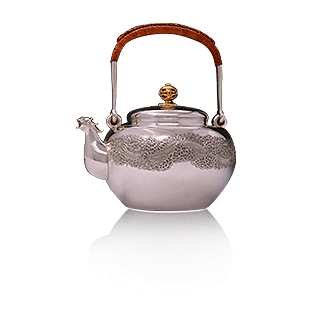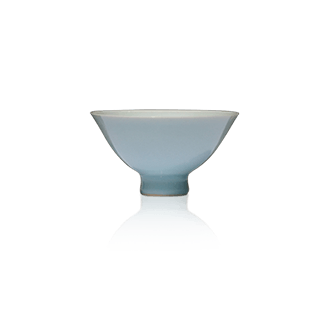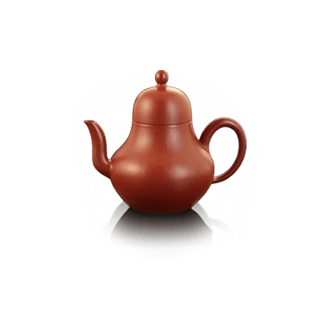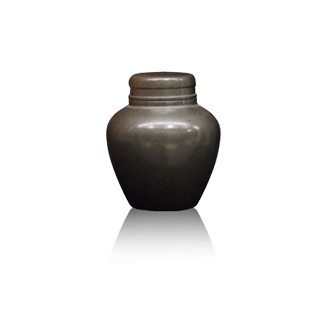








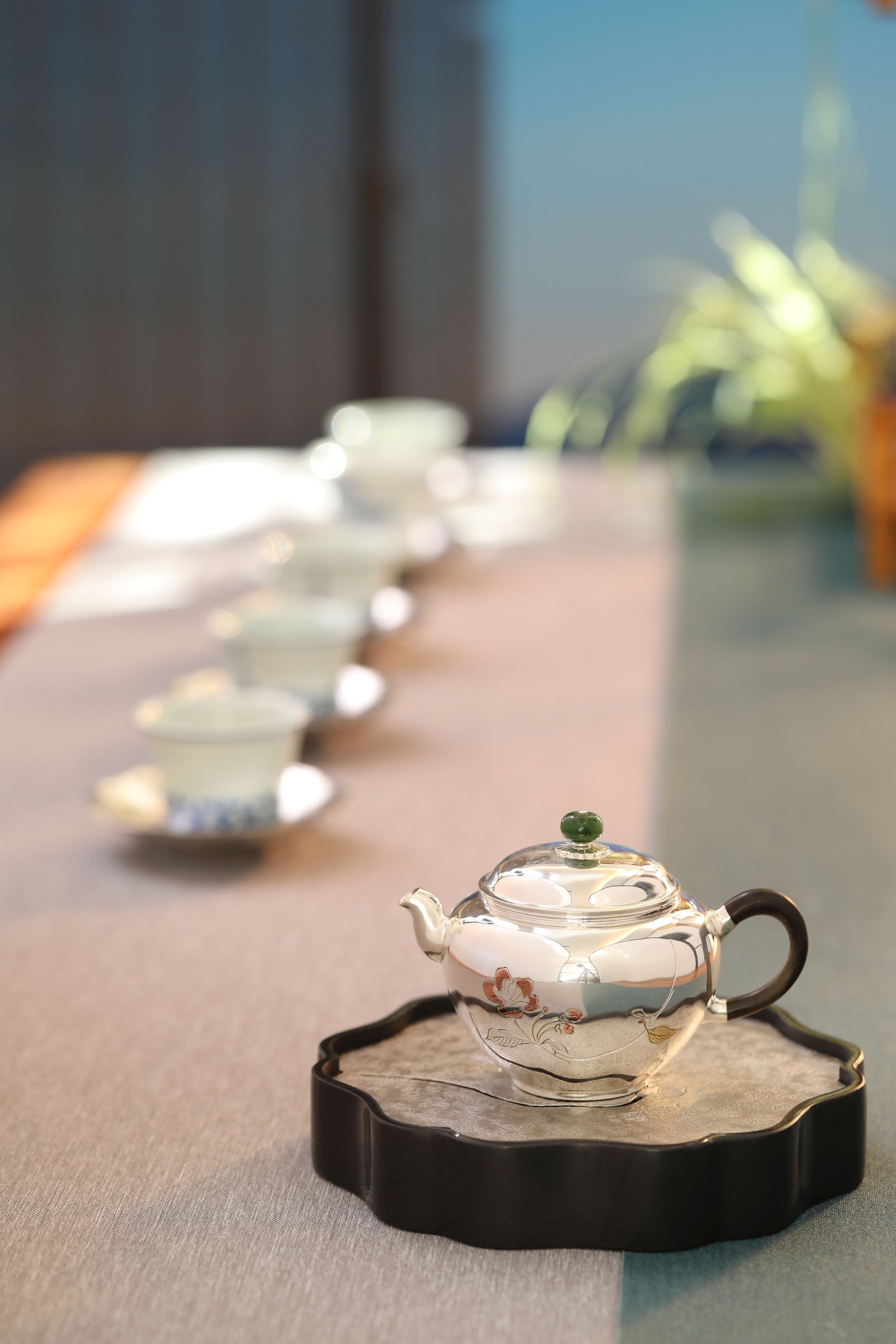
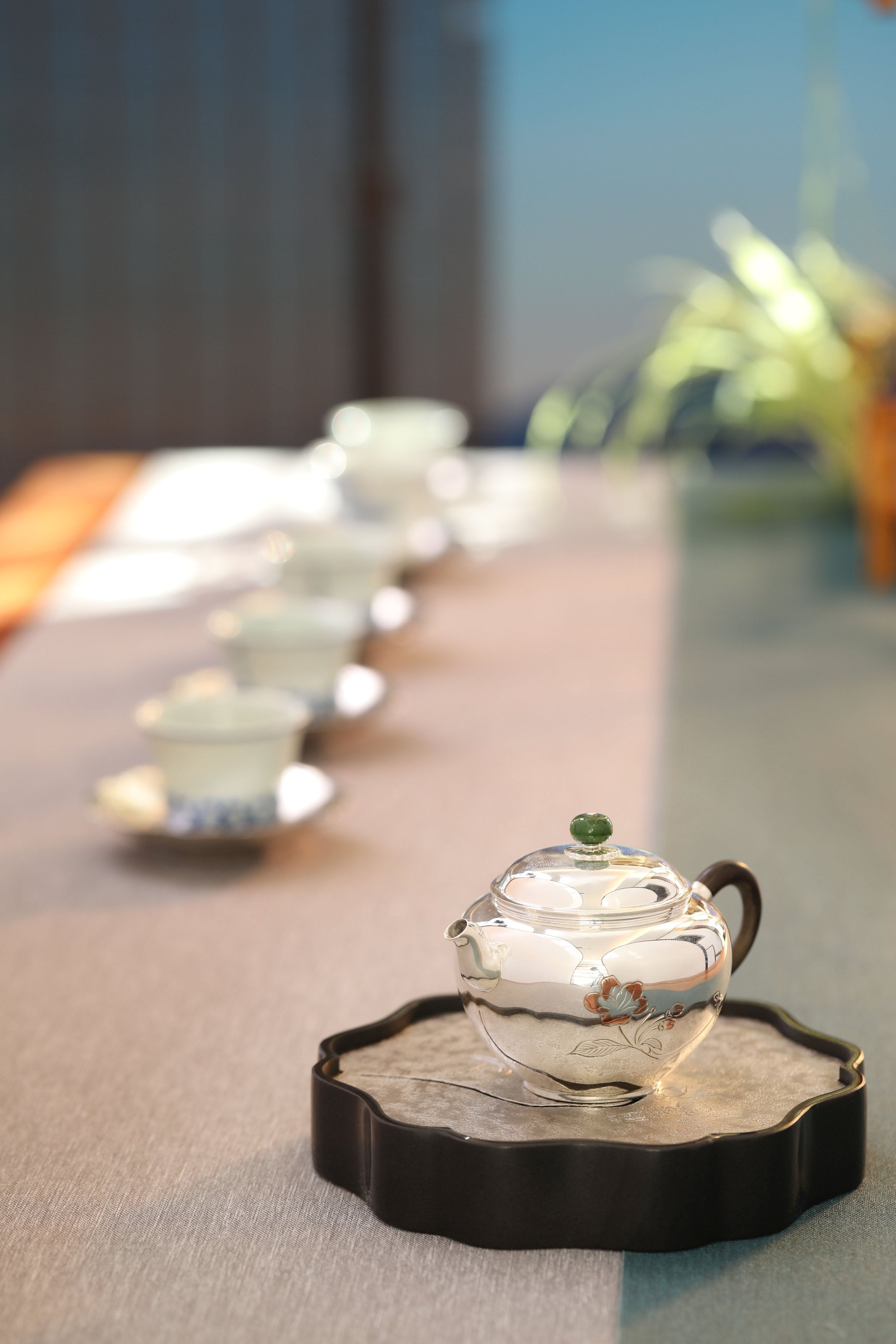
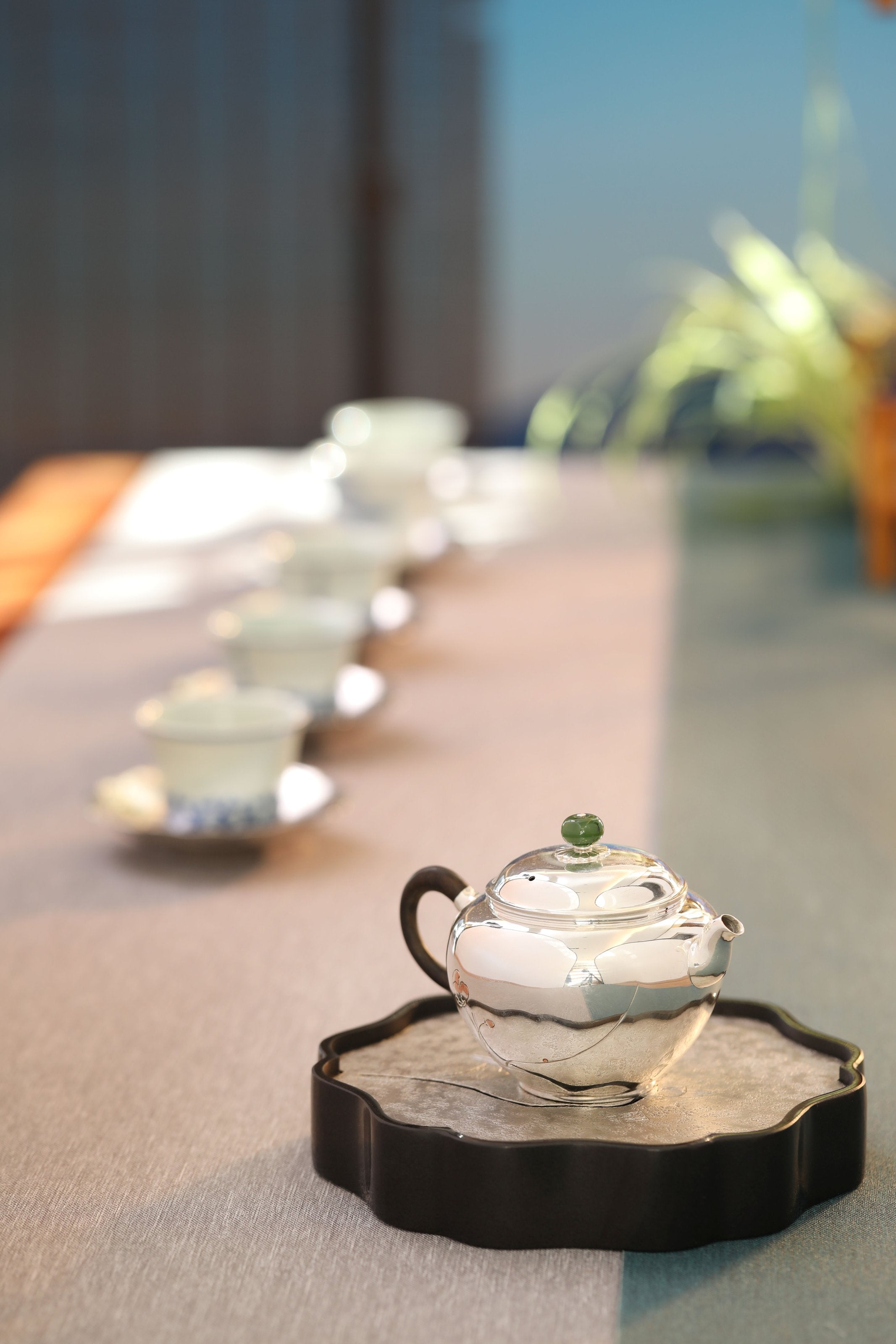

Pick a crabapple















Pick a crabapple
Pick a crabapple
Works by Li Fuming
Sterling silver. Capacity: Approx. 180 ml. Weight: Approx. 160 g.
The term "掇只" originates from a type of Zisha teapot. The origin of the 掇只 shape: In the Yixing County Annals, a teapot worth a thousand gold pieces was called "掇只". In the local Yixing dialect, a container for seasonings and candies was called "掇子". Because "子" is an entering tone, and the entering tone is no longer pronounced in standard Mandarin, it gradually became mistakenly transmitted as "掇只".
Li Fuming, an inheritor of the intangible cultural heritage of silver forging, blends silverware with the aesthetic charm of traditional Chinese purple clay pottery.
This teapot features exquisite engraving of begonia flowers, an old rosewood handle to prevent burns, a smooth body, and a jade knob. Its design is grand within a small space.
In Yixing, locals call "duozhi" "dezi," which in the local dialect means "jar." Originally, teapot makers simply imitated small everyday jars to create the teapot body and then attached a spout and handle. "A purple clay teapot" is full of life, charm, and meaning.
Another account states that the Yixing County Annals record a teapot described as "worth a thousand gold pieces, almost impossible to obtain." It is a Zisha teapot called "Duozhi," a unique shape among Zisha teapots. Its shape resembles many spherical and hemispherical shapes stacked together. Since "duo" in Chinese means to connect and stack, this type of teapot is called a Duozhi teapot.
Origin of the "Duozhi" teapot:
During the Daoguang era of the Qing Dynasty, Shao Daheng created the "Duozhi" teapot.
Shao Daheng, a native of Shangyuan Village, Shushan, Yixing, Jiangsu Province, achieved fame at a young age. Born around the late Qianlong period and died at the end of the Daoguang period, he was known for his proud, upright, and unyielding character. His teapots were characterized by their rustic simplicity and elegant charm. During the Qing Dynasty, his works were considered treasures by teapot enthusiasts, with some saying, "A single teapot is worth a thousand gold pieces, almost impossible to obtain." The Guangxu edition of the *New Gazetteer of Jingxi County, Yixing* states: "A county magistrate desired to acquire one of Daheng's teapots. He purchased and selected clay colors, summoned him to his office, and offered him substantial rewards. He kept him there for ten days, but Daheng deliberately produced inferior teapots to meet him. The magistrate was angered and had him flogged, but Daheng did not resort to violence."
In his "Outline of Yixing Purple Clay Teapot Art", Gu Jingzhou wrote: "After decades of studying his works, I feel that his (Shao Daheng's) various pieces can be regarded as the culmination of purple clay art, sweeping away the delicate and ornate style of a generation. From his refined selection of clay, the profound aesthetics in the shape, the perfection in the creative form, and the superb skills, he won praise for a time and was so highly regarded that he was said to be 'unprecedented and unparalleled'."
Works by Li Fuming
Sterling silver. Capacity: Approx. 180 ml. Weight: Approx. 160 g.
The term "掇只" originates from a type of Zisha teapot. The origin of the 掇只 shape: In the Yixing County Annals, a teapot worth a thousand gold pieces was called "掇只". In the local Yixing dialect, a container for seasonings and candies was called "掇子". Because "子" is an entering tone, and the entering tone is no longer pronounced in standard Mandarin, it gradually became mistakenly transmitted as "掇只".
Li Fuming, an inheritor of the intangible cultural heritage of silver forging, blends silverware with the aesthetic charm of traditional Chinese purple clay pottery.
This teapot features exquisite engraving of begonia flowers, an old rosewood handle to prevent burns, a smooth body, and a jade knob. Its design is grand within a small space.
In Yixing, locals call "duozhi" "dezi," which in the local dialect means "jar." Originally, teapot makers simply imitated small everyday jars to create the teapot body and then attached a spout and handle. "A purple clay teapot" is full of life, charm, and meaning.
Another account states that the Yixing County Annals record a teapot described as "worth a thousand gold pieces, almost impossible to obtain." It is a Zisha teapot called "Duozhi," a unique shape among Zisha teapots. Its shape resembles many spherical and hemispherical shapes stacked together. Since "duo" in Chinese means to connect and stack, this type of teapot is called a Duozhi teapot.
Origin of the "Duozhi" teapot:
During the Daoguang era of the Qing Dynasty, Shao Daheng created the "Duozhi" teapot.
Shao Daheng, a native of Shangyuan Village, Shushan, Yixing, Jiangsu Province, achieved fame at a young age. Born around the late Qianlong period and died at the end of the Daoguang period, he was known for his proud, upright, and unyielding character. His teapots were characterized by their rustic simplicity and elegant charm. During the Qing Dynasty, his works were considered treasures by teapot enthusiasts, with some saying, "A single teapot is worth a thousand gold pieces, almost impossible to obtain." The Guangxu edition of the *New Gazetteer of Jingxi County, Yixing* states: "A county magistrate desired to acquire one of Daheng's teapots. He purchased and selected clay colors, summoned him to his office, and offered him substantial rewards. He kept him there for ten days, but Daheng deliberately produced inferior teapots to meet him. The magistrate was angered and had him flogged, but Daheng did not resort to violence."
In his "Outline of Yixing Purple Clay Teapot Art", Gu Jingzhou wrote: "After decades of studying his works, I feel that his (Shao Daheng's) various pieces can be regarded as the culmination of purple clay art, sweeping away the delicate and ornate style of a generation. From his refined selection of clay, the profound aesthetics in the shape, the perfection in the creative form, and the superb skills, he won praise for a time and was so highly regarded that he was said to be 'unprecedented and unparalleled'."













Frequently asked questions
Use the FAQ section to answer your customers' most frequent questions.
Order
Yes, we ship all over the world. Shipping costs will apply, and will be added at checkout. We run discounts and promotions all year, so stay tuned for exclusive deals.
It depends on where you are. Orders processed here will take 5-7 business days to arrive. Overseas deliveries can take anywhere from 7-16 days. Delivery details will be provided in your confirmation email.
You can contact us through our contact page! We will be happy to assist you.





